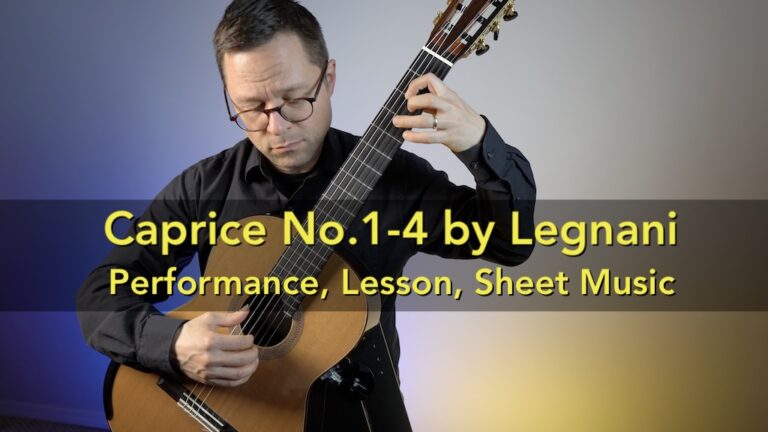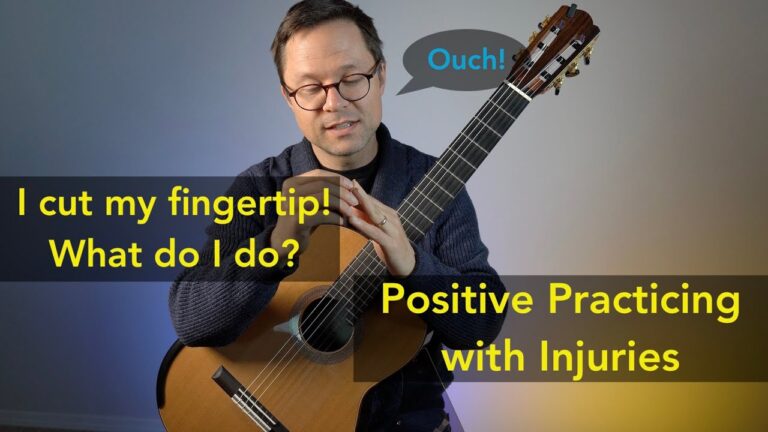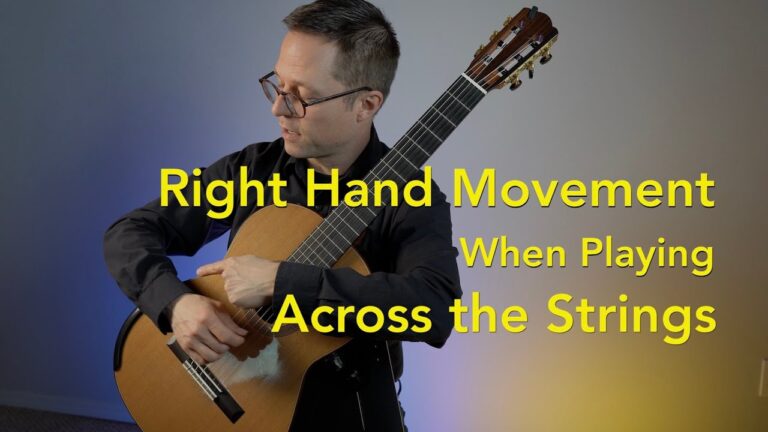This lesson comes from my Method Book Volume 2.
Below is the lesson for A Minor (Page 11) including the scales and chord progressions. The lesson for the Romance by Kuffner (Page 12) starts 4:45 mins. The lesson for Leccion by Sagreras on (Page 13) starts at 6:25. Be sure to watch the whole video straight through to get an overview and to not miss any info.
Below is a recording of the duet with my friend Natasha Pashchenko as well as the chord song Star of County Down (Page 14). Please note that the updated version of my book does not use slurs for the duet. If you are playing the duet without a teacher just play the melody on its own.
Big thanks to Natasha Pashchenko for helping with the duets. Natasha is an excellent guitarist, teacher, and friend from Victoria, BC.





In Leccion No.46 the notation for the A Minor triplets uses the A bass string in bar one, four and the final triplet but the first triplet of the seventh bar hits the E string as the bass. Just wondering why this is? To me the A string as bass sounds better. Thanks for the wonderful tuition, Regards David James
That is what is called a I6/4 chord. It’s something that sometimes happens around cadences where the 5th of the Am chord is in the bass, which is the same as the bass note of the V chord that follows. Forget all the technical talk though, the idea is that it increases the harmonic tension so you get even more sense of arriving home at the final A minor chord that ends the piece. Away from home (tension) leading to home (resolution).
Could you please explain the movement from first to second position. Thank you
It’s covered during the scale in the video: at 1:56 I discuss how to shift from one position to another.
Can you explain what a melodic minor is please? There are plenty of resources explaining major/minor keys, but (that I can find) none that explain how the melodic (or harmonic, which seems to be similar?) minor fits with this.
There are three main minor scales to know at early stages but you don’t need to know them all for my Volume 2 book. The natural minor scale, the harmonic minor scale, and the melodic minor scale. The natural minor scale follows the key signature. The harmonic minor raises the 7th note. The melodic minor raises the 6th and 7th on the way up and returns to the natural minor scale when descending. There are three variations on the scale because of the way that harmony and melody work in musical compositions. For now, playing the melodic minor is useful as it casts a wider net in terms of note selection and, for my method, gets students reading sharps and flats more often.
In the fourth line of Romance (bar 13), I’m curious why I should play the A and then the G both with the fourth finger instead of the 2nd or 3rd finger on the G. Could you tell me your thoughts there?
Good question. At later levels the student might use the 2nd finger on G and stretch for the F natural or other solutions like not worrying about it and blending positions. However, for the beginner level I’m really pushing strict position playing and consistent fingering and a stretch might be a bit much for some so we use a position shift with the 4th finger guide as a way to keep the hand compact and emphasize a clean shift. Lots of options here but I went with something that a variety of students could handle at the this level (including kids or people with smaller hands).
Understood. Thank you for the quick reply!